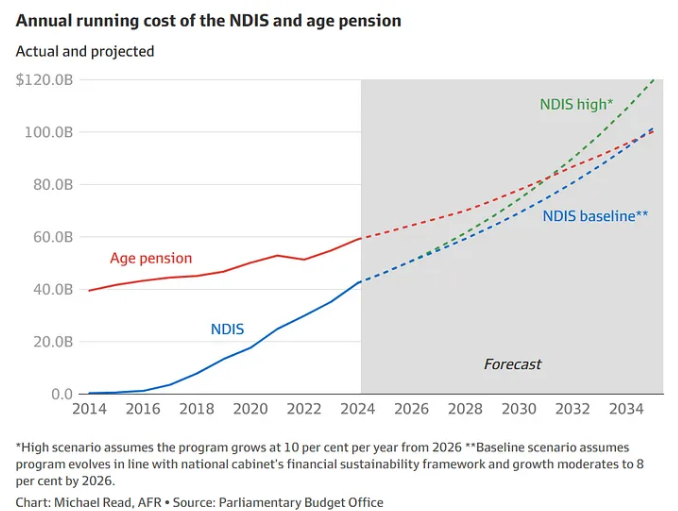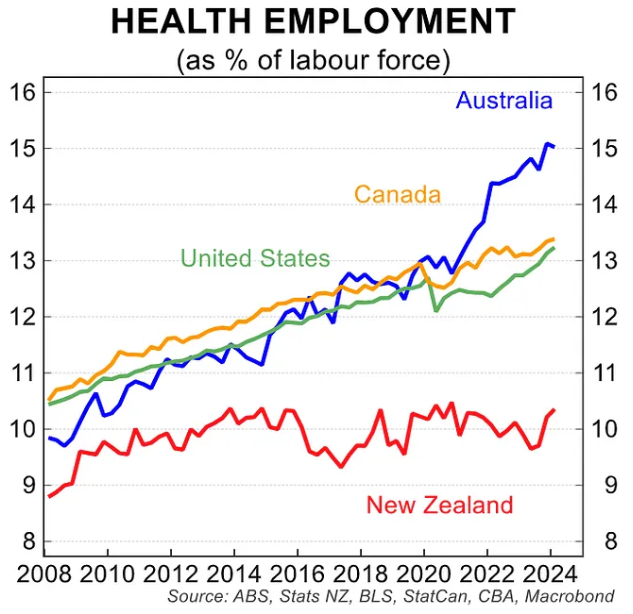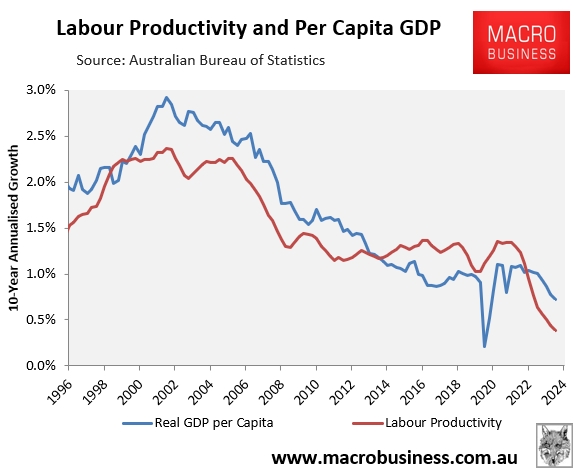The National Disability Insurance Scheme (NDIS) currently costs nearly $50 billion after growing by around 20% per year.
The Parliamentary Budget Office (PBO) warned that it could cost $100 billion annually within a decade, equalling the Aged Pension.

An extensive Research Note from the e61 Institute think tank notes that the rapidly expanding ‘care economy’ now employs 15% of working Australians, up from 10% in the early 2010s.

Most of this growth has come from disability care jobs relating to the NDIS:

“Employment in disability care has doubled over the past decade”, e61 notes. “Demand for care is projected to rise further over the decades ahead”.
While the growing care economy has undoubtedly benefited the near 700,000 Australians on the NDIS, e61 warns that “growth in the care economy is also drawing a substantial reallocation of labour from the production of other goods and services”.
The care economy was the largest area of growth across the Australian economy over the past decade, narrowly beating mining.
However, virtually all (93%) of the care economy’s growth was driven by increased hours worked in the sector, and the care economy recorded basically zero labour productivity growth over the decade to 2023, or the decade prior.

As a result, the expansion of the care economy has contributed to Australia’s overall productivity slowdown.
“Reallocation towards the care economy is assessed to be a net-negative for labour productivity overall”, e61 notes.
“It has mechanically reduced measured labour productivity growth by an average of about 0.2 percentage points each year since 2020 as employment in the care economy has grown especially quickly”.

“Cumulating over time, the effect of reallocation to the care economy amounts to a level of labour productivity by 2023 that is several percentage points lower than otherwise”.
e61 also estimates that “most growth in the care economy required a flow of workers from other sectors. The care economy was, on net, the largest destination for job switchers over the decade to 2022”.

“Almost half of job switches to the care economy came from retail and accommodation & food” e61 notes. “The other half of the net flow of workers into the care economy has come mostly from other services industries plus a modest flow from manufacturing”.
The switch to the care economy has been brought about by the higher wages on offer.

Given that productivity growth is the key determinant of per capita GDP growth, as illustrated below:

The ongoing growth in care economy jobs risks economic stagnation for Australia.
As more resources are diverted towards the NDIS, the economy will necessarily become less dynamic and income-generating.

